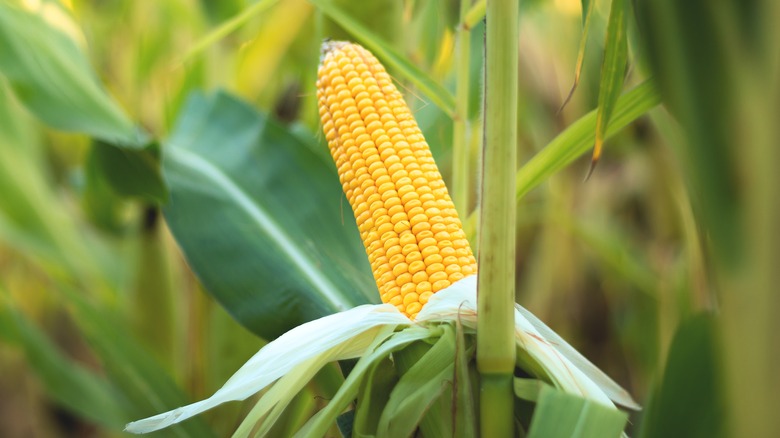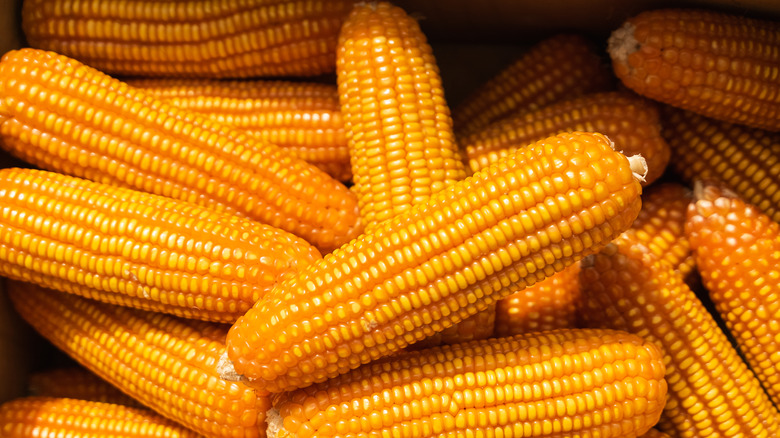The Historic Reason Individual Corn Cobs Were Called 'Ears'
The anatomy of the modern corn plant is a testament to human ingenuity, formed as it was over 5,000 years of selective cross-breeding by indigenous Mexican cultivators, according to the National Science Foundation. Originally derived from the wild teosinte plant, a modern corn stalk can reach up to 10 feet in height, notes ThoughtCo. The leaves of the plant branch out from a central stem, with male and female parts coordinating to produce the corn on the cob we enjoy at picnics or the sweetcorn served as a favored side dish. The male tassels sprout at the top of the stalk, while the female part flowers to become the ear of corn, with its silken threads, kernels, and enveloping husk.
Corn's anatomy is decidedly less complicated than its etymology. While the Spanish used the word maize to refer to the plant, the British in centuries past applied the term corn rather indiscriminately as a synonym for grain, observes Bon Appétit. Wheat and oats, at one time, were both referred to as corn in different parts of the U.K. In the American colonies, similarly, maize became known as "Indian corn." Even more confusing than the term corn's ubiquity, perhaps, was the choice of the word "ear" to refer to the fresh kernel-bearing cob. So was this delightful food item named after hearing organs?
The Old English origins of corn ears
If you think corn ears can't possibly be named for hearing organs, you're right. Although ear has multiple meanings in modern English, the root word for an ear of corn is different from the root word for the ears we use for hearing, notes Grammarphobia. The term ear in reference to corn probably originated about 800 CE, while the Indo-European word "ous" (possibly "aus") wasn't codified in Old English as ear (meaning hearing organ) for another 200 years. But by 1000 CE, the same word was used in both contexts. According to the British Library, the Old English period stretched from about 450 to 1150 CE.
According to Grammarphobia, the word ear first appeared in Old English to refer to the spike that forms at the top of grains. The Oxford English Dictionary defines it as "the part of a cereal plant which contains its flowers or seeds," meaning ears of barley, ears of wheat, and ears of rice is common parlance among English-speaking farmers. So whether you're reaching for a dad joke or blanking on a cereal-based crossword clue, you won't soon forget which ear is which.

